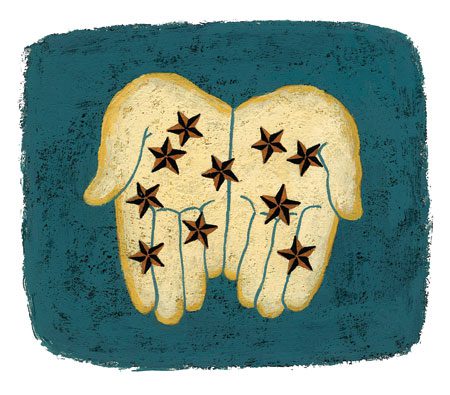Doing Good Better
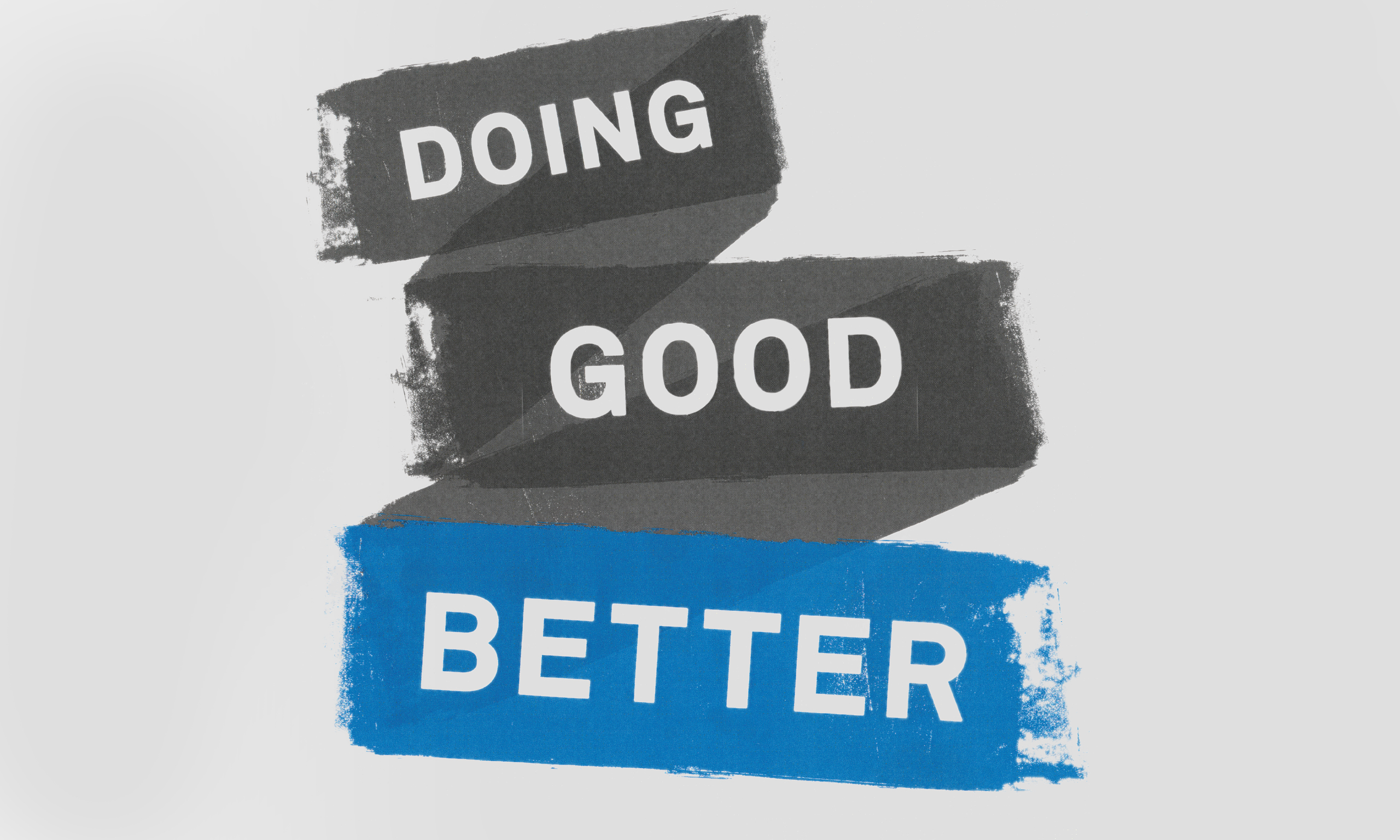
Why do so many well-intentioned service efforts fall short? BYU experts offer ideas on how to make a real difference in the world.
By M. Sue Bergin (BA ’78) in the Winter 2018 Issue
Hurricanes Harvey, Irma, Maria. Earthquakes in Iraq, Mexico, Nepal, Haiti. Famine in Yemen. Tsunamis on distant shores. Wildfires in California. Bedraggled refugees fleeing war and destruction. A homeless man with a cardboard sign beneath a streetlight in your hometown.
There seems to be no end of needs—and no end of pleas for your help to do something about them. You’re sick at heart to see the suffering. You want to help. And so you consider your options and pitch in where you can.
But BYU experts say such giving decisions are more complicated than they may appear. It can be hard to know if your efforts are helping in ways that make the right kind of difference.
For instance, if you respond to that Facebook post requesting donations of money and supplies for Puerto Rico, can you be sure your dollars will actually reach the destination and not land in the pocket of a scammer? How would donating used shoes to Africa affect the local economy? And are shoes what the recipients really need? When a disaster strikes abroad, should you pack up your family and head out to give hands-on help? How about the homeless man on the street? Will your $10 help him through the night or deepen his dependence?
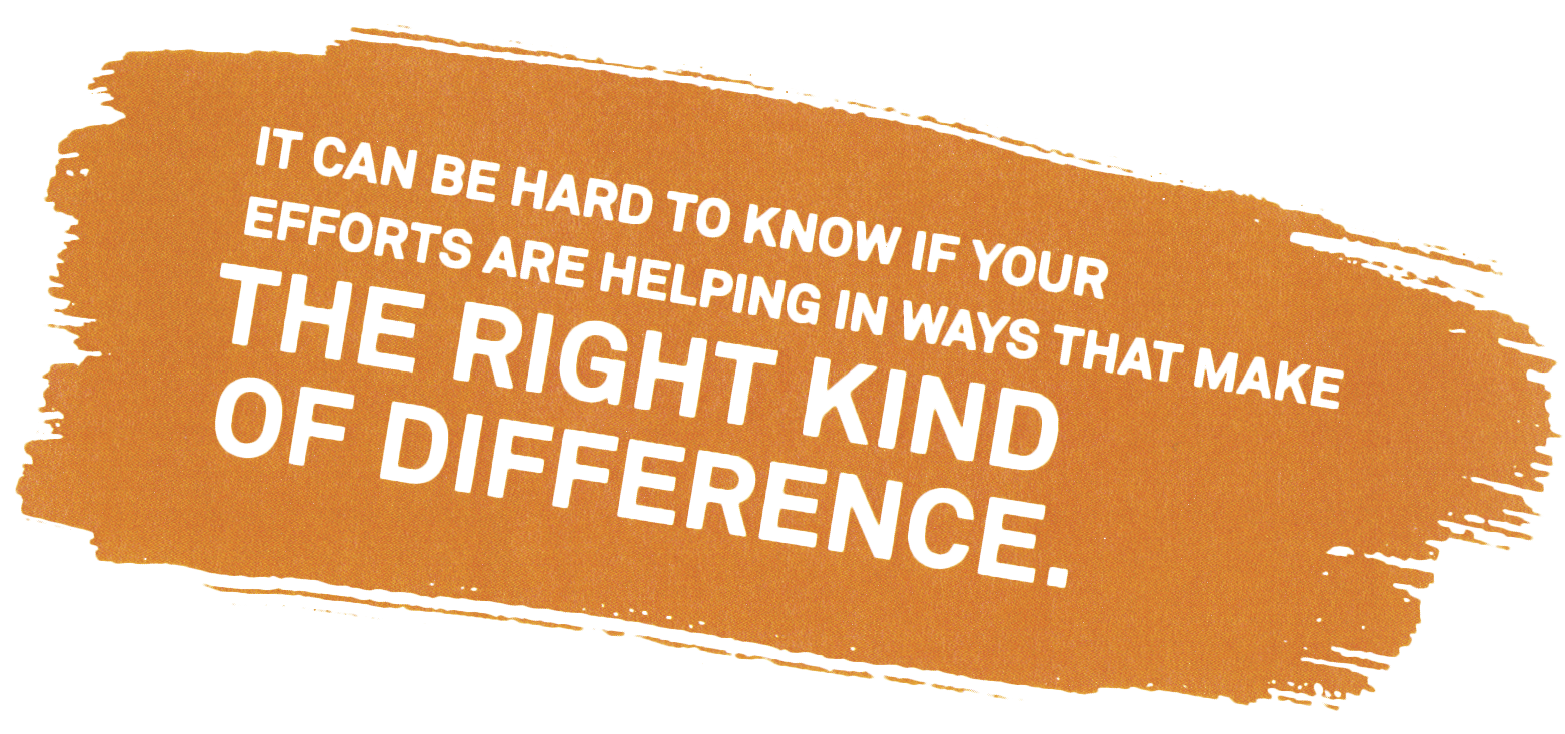
“People just don’t naturally think about the possible negative outcomes of the good they’re trying to do, which can put already vulnerable populations at risk,” says Eva M. Witesman, associate professor in the Marriott School of Business’s Romney Institute of Public Management. She researches nonprofits and voluntary action, and one of her recent studies shows that philanthropic-minded people tend to be biased toward thinking they’re helping more than they are.
Witesman is just one of many BYU professors who research giving and have found that, despite our best intentions, our charitable efforts often fall short of the mark. What’s worse, those efforts sometimes even cause harm by creating dependence, motivating negative behaviors, or burning out us and those we rally to our cause. Effective service, they say, is complex. But that doesn’t mean we should stop giving. According to these experts, by following best practices, volunteers can give in ways that get to the heart of problems and don’t cause inadvertent harm. Here they offer advice for how to avoid the snares and make a lasting, meaningful difference.
Help That Really Helps
Consider a hypothetical nonprofit digging a well in Africa. The volunteers feel intuitively that what they’re doing is good and might even see with their own eyes the evidence that it’s good. “They dig a well in a village in Africa, see the water bubbling up, see people using the water, conclude they’ve done good, and go home happy,” says Daniel L. Nielson (BA ’88), professor of political science and an expert in creating and assessing international aid projects. “Giving service stimulates powerful positive emotions.”
Neurologically speaking, he explains, that satisfied feeling rises up when altruistic action incites your brain’s mesolimbic reward system to release feel-good dopamine. Researchers have found that this main reward pathway “lights up” as people behave selflessly.
“That’s a beautiful thing. It means we’re hardwired to give. It’s one of the great gifts we have as humans,” says Nielson, who adds that he gets his own “helper’s high” as he researches best practices for reducing global poverty and uncovers corruption as money is intercepted between the givers and the intended recipients.
But that dopamine rush we feel can be dicey when we get our magnanimity fix in a misguided effort or perform our service without sticking around to see how things go. Sometimes the results are not so hot.
Unfortunately, few individuals and only a minority of charitable organizations carefully test their interventions to learn if they actually solve the problems they’re aimed at, says Nielson. If the volunteers do not measure how things went following the intervention—whether the hypothetical bore hole failed within a few months or years—they won’t know if the service was a success or if it caused harm. And they might replicate that harm elsewhere.
“The villagers are now dependent on that well,” says Nielson. “They might not remember what they did before to get water. And they might be more cynical about white people coming to help.”
When we take the time to study the effectiveness of common charitable interventions, we can be surprised.
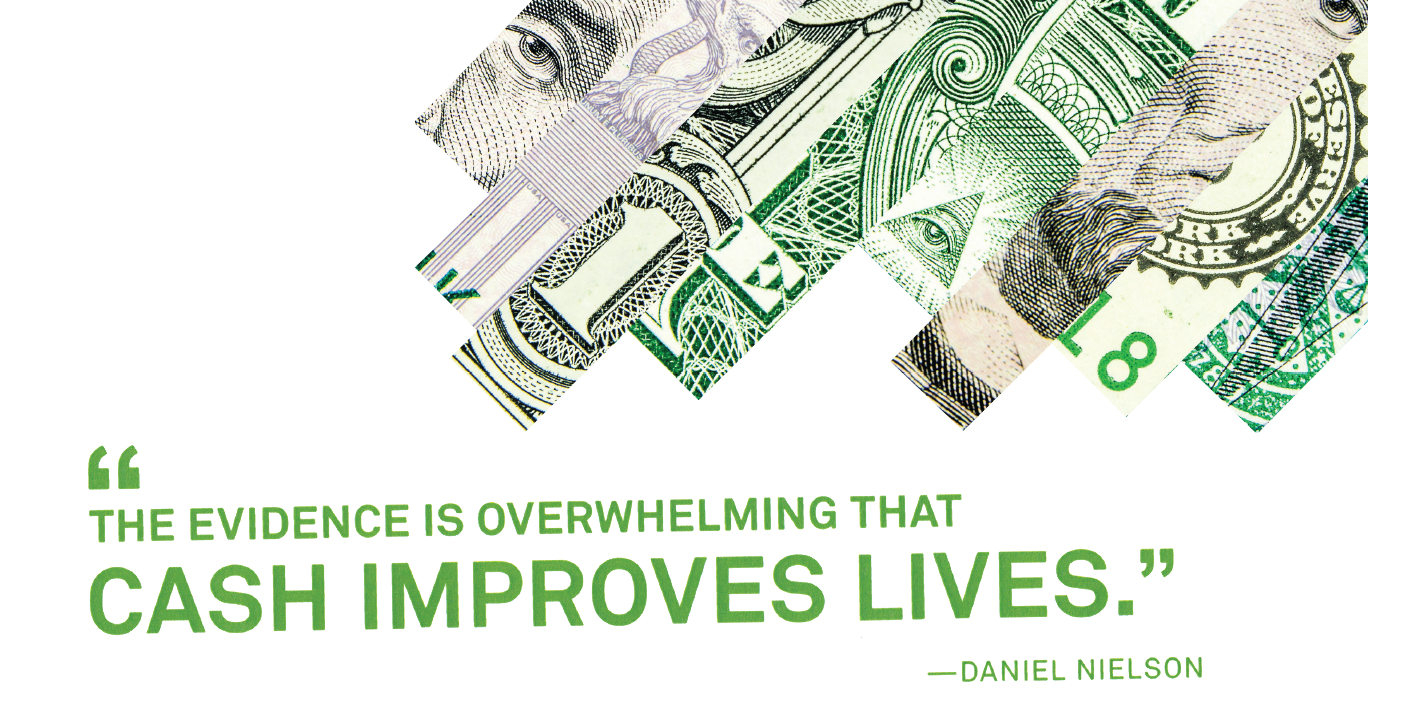
For instance, how about fund-raisers collecting used items like books, electronics, clothing, or shoes to be sent to impoverished communities abroad? Such drives are inefficient and have major unintended consequences, according to Scott R. Sanders (BS ’02), professor of sociology and director of BYU’s Project Evaluation and Assessment Team (PEAT), which helps nongovernmental organization (NGO) clients evaluate their programs. He says the goods are “too expensive to transport or they’ll get there and be thrown away because they’re out of date or not needed. If they do make it to market, they put local shoe sellers, electronics stores, seamstresses, etc. out of business because there’s this flood of free stuff.”
Or how about going abroad to serve in an orphanage? What could be wrong with that? Jini Lyman Roby (BS ’77, MS ’84, MSW ’84, JD ’90), a professor of social work, contributed to recent research that found that such trips sustain and help create demand for institutional-based approaches to child welfare, even though family-based approaches, where a child is raised by relatives, are much healthier and more effective for the child. Over the last two decades, abundant donations and free labor in the form of volunteers have led to for-profit orphanages and a corresponding explosion in their numbers. However, studies show that as many as 90 percent of the children being served are not orphans by the traditional definition of children who have lost both parents. All too often, Roby and her colleagues see what they call “altruistic exploitation”—exploitation of the volunteers’ generous impulses and exploitation of the children they set out to serve.
Even a giving mainstay like microlending can prove problematic when put under scrutiny, says Nielson. He says research shows that providing small loans for poor people in developing countries, a method of giving that became popular in the 1980s, turns out to have more mixed results than expected. He cites multiple studies during the last decade: Microlending “helps entrepreneurs launch new businesses but has limited effect on health, education, or women’s empowerment,” he says, “and it saddles non-entrepreneurs with high-interest debt.” Current research suggests that what the poorest people in these countries really need is cash they don’t have to give back.
Contrary to conventional wisdom, says Nielson, programs like GiveDirectly.org that transfer funds directly to the impoverished have few negative outcomes. “Cash transfers . . . have been tested more than any other intervention in developing countries, and the evidence is overwhelming that cash improves lives,” he says. The recipients don’t head to the nearest bar or gambling joint and spend it all. “There’s no evidence at all for this,” he notes. In fact, cash transfers have been shown, on average, to actually reduce recipients’ expenditures on what researchers call “temptation goods.” They typically save some cash for the rainy days that come so often in developing countries—job loss, medical bills, droughts, floods. The rest they spend on necessities like food, medicine, and transportation for their jobs. “They’re good at saving,” he says. “They don’t touch about half of it until needed.”
Nielson acknowledges that such findings may feel counterintuitive for donors who desire to improve self-reliance among recipients. But he underscores the complexities of giving and the need to study each intervention carefully to ensure that it is making the right kind of difference.
At Home or Abroad?
After the 2010 earthquake in Haiti, Craig B. Nelson (’94) felt an inexorable pull toward the land of his LDS mission. Within a few days, the financial planner had mobilized volunteer doctors, nurses, and translators, and they headed by helicopter to the remote epicenter, in Leogane. “Haiti is in my heart and my soul and my blood,” he says. “I had to go. There was no choice.” His group was able to save hundreds of lives within in a short amount of time.
Enticing as such trips might be to would-be benefactors, BYU experts say that such results are more often the exception than the rule. While Nelson and his crew had the skills and expertise of doctors and nurses on their side and an emergency situation that compelled action, those who travel abroad for short humanitarian trips usually have few skills and rely on organizers they might not know well or at all. The risk of spending time and money with little return is particularly high for what have become termed “humani-tourism” trips, where people spend thousands of dollars to simultaneously experience a new country and provide service, such as building a school or digging a well.
“Some people who go on these trips end up doing amazing things,” says Sanders, “but often it’s very disappointing, and they end up not being much help.” If a community in Mexico needs a new school, he says, rather than spending tens of thousands of dollars to transport foreigners for the job, it’s usually better to raise cash and pay local workers to build the school. Not only does the community get a new school, but the workers receive income, which they can then spend at local businesses, jumpstarting the whole economy.
If you do want to try one of these trips, Carol J. Ward, professor of sociology and associate director of PEAT, recommends inquiring deeply into whether a sponsoring organization has done its homework to establish trust and communication with the community it serves. “Any NGO working in another country should focus on the capacity of the local folks—see what they can do themselves—and become a partner in that community helping to build capacity rather than imposing projects and creating dependency,” says Ward.
While there are many worthy causes to support abroad, for most people, especially those with children at home, traveling abroad can be too expensive and difficult to sustain. Sanders believes volunteers often have a greater impact when they support local opportunities, where they’re more likely to have a long-term, hands-on influence.

He points to the example of his wife, Jennie. A few years ago, she and her friend Julianne Grose, a BYU assistant professor of microbiology and molecular biology, started making sack lunches for clients of the Provo Food and Care Coalition. The project grew, and now people throughout the neighborhood make 50 sack lunches every two weeks. “Our ward lets us use the chapel even though [the service is] not sponsored by the Church,” says Sanders. “They divide up who brings what—bread, lunchmeat, fruit—and they get it done. Food and Care knows they can count on these meals, and they can then use their cash for other things.”
Lonnie T. (MS ’03) and Alisa Allred Mercer (’00) and their three children donate money to and volunteer frequently at the Bountiful Community Food Pantry in Bountiful, Utah, where Alisa works. The Mercers find that this opportunity near their home helps them all become better citizens.
“Most well-fed children in Utah probably don’t know that one in five kids in our state is at risk every day of not having enough to eat,” says Alisa. “Our kids know—that doesn’t stop them from complaining about what I make for dinner—but they’re more aware, and I think it makes them more compassionate.”
Integrating Alisa’s day job into the family’s volunteer efforts was a natural fit. For families or individuals looking for a fit of their own, United Way has for decades matched people with opportunities close to home.
The Church provides many opportunities for local service, beginning with fast-offering donations, which priesthood leaders use to address needs in the immediate community. And the Church’s JustServe.org website lets you browse service opportunities in your community, such as reading to elementary school kids, teaching life skills to adults, or playing with children while Mom and Dad attend parenting classes. If you provide an email address, JustServe will send updates on one-time events where you simply show up and serve.
Getting involved close to home allows you to see the results of your donations or volunteering up close and better understand what’s working and what isn’t, says Witesman. “As President Uchtdorf suggests, ‘Lift where you stand,’” she says. “Focus on the needs within your immediate circle of influence—your family, neighborhood, or community. There are needs everywhere.”
Find a Partner
A few years ago G. Mark (’89) and Elizabeth England (BFA ’93) were hunting for a long-term commitment to a charity. They decided to look into an international nonprofit that serves impoverished children. After meeting with several of the organization’s officials, scrutinizing administrative costs, and speaking to a staff member who provides the service abroad, the Englands felt ready to commit.

As with the Englands, finding a partnering organization can be the key to making a meaningful difference. But not all nonprofits are created equal: they vary widely in terms of their longevity, organizational structure, fund-raising efficiency, employee-compensation approach, and the percentage of donations that actually make it to the community in need. Many of these particulars are covered in IRS Form 990, which charitable organizations file each year. You can often find this form on a charity’s website or through sites like GuideStar.org or FoundationCenter.org.
Many nonprofits also seek formal outside evaluation and make the assessment reports available to the public, which is an emerging gold standard for vetting. Nielson says an easy first step to finding nonprofits that have invited assessment is to consult one of the respected online resources that aggregate evaluation information. He considers GiveWell.org the best because it gives priority to randomized evaluation, which provides the best estimates of program impact.
Beyond consulting websites, Witesman says it’s important to ask whether an organization you’re considering has thoroughly assessed the needs of the population it serves. “It’s tempting to see a person or group from afar and guess at something they need,” she says. “It takes more work and more commitment to actually talk to or live with people who are experiencing need.”
In evaluating organizations, many people think looking at a nonprofit’s overhead is critical to judging financial effectiveness, but Sanders says it isn’t always a reliable guide. Medical NGOs like Doctors Without Borders have high overhead costs because of the expensive medical supplies they need. “Overhead is not a great measure. A better measure is how transparent the organization is,” he says. “If you give your money, you should know where it goes.”
Choose Your Thing
Since the 2010 Haiti earthquake, Craig Nelson has returned to the country several times, including just a few months after the initial trip to assess the progress of programs his group set up in several hospitals and clinics. He continues to visit Haiti periodically, sometimes taking family with him. From Utah, he translates English to Haitian Creole for every LDS general conference, joins many group initiatives, and assists individuals and families case by case. Haiti is his thing.
Choosing to focus his family’s charitable time and money on Haiti means Nelson is building his expertise about how to support Haitians as they build lasting relief in a complex, intensely troubled hotspot. He also says he experiences a deeper, more satisfying sense that he’s making a difference than if he were making scattered contributions over several unrelated causes.
Todd M. Manwaring (BS ’87, MOB ’01) directs the Melvin J. Ballard Center for Economic Self-Reliance and the Peery Social Entrepreneurship Program, both in the Marriott School of Business. He says he’d like to see more people like Nelson—more individuals, families, and organizations who give their time and money in enduring, sustainable ways.
Manwaring, who himself has founded and directed two nonprofit initiatives, suggests that families first take time to discover what issues interest family members most. Maybe a family challenge like autism or traumatic brain injury could become a rallying cry.
“Spend a family home evening—or several—talking in an extended way about the options,” says Manwaring. “Maybe you pick two things, but it’s one or two and not seven.”
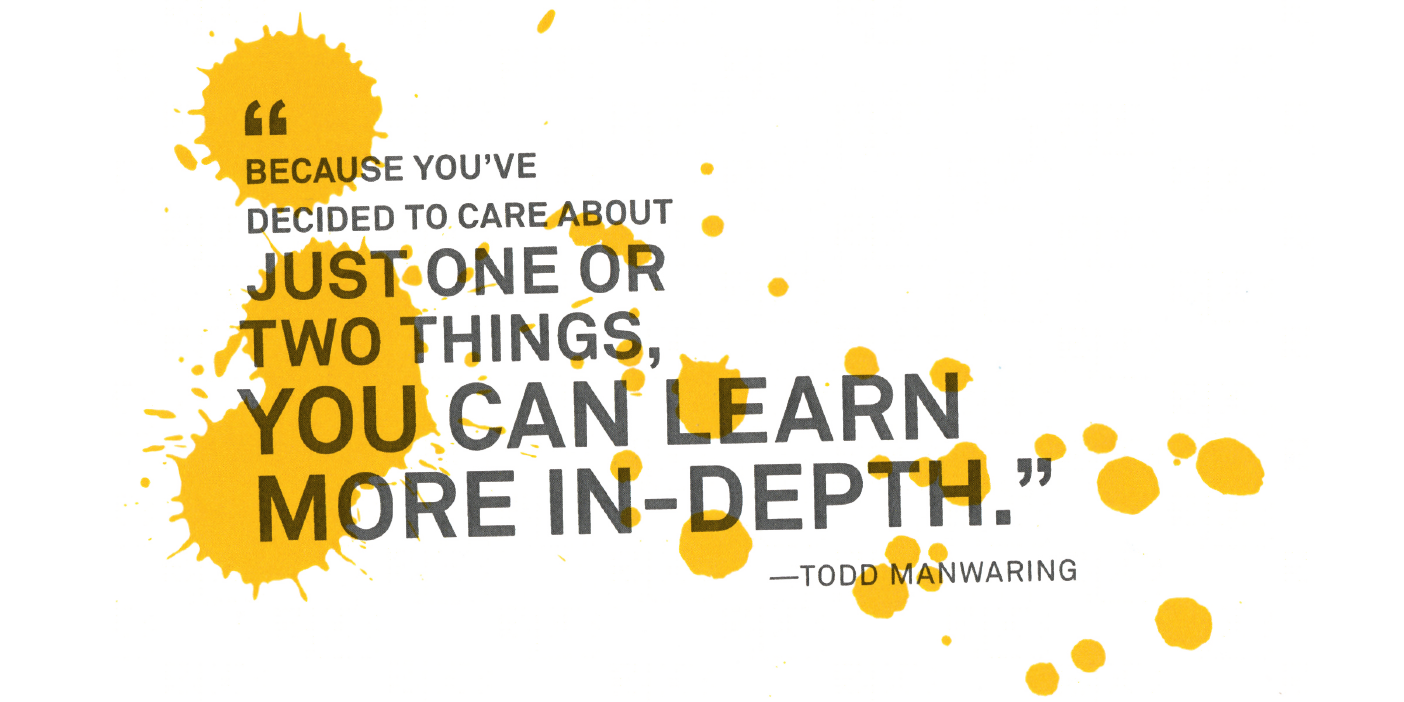
The next step is to learn about your chosen cause. If you’ve decided on vaccines for children in developing countries, Googling the topic is great. But even better, says Manwaring, is to stay abreast of the topic day-to-day. (He recommends creating “Google alerts,” which feed you daily news about a keyword.) “Because you’ve decided to care about just one or two things, you can learn more in-depth.”
A third step might be to donate to an organization you’ve vetted. As you learn more, you can give in more targeted ways. You might decide over time, for example, that you want to fund vaccinations for children against one specific illness or in one particular country. Action can be added too. Family members might eventually become board members for an organization or volunteer their time in other ways. And as you become more informed, you can advocate for your cause to other people.
He says one of the beauties of this approach is that it allows you to say no more easily to solicitations for other causes. “You can tell people that you like their idea, but it’s not your cause. ‘We’re putting our time and money in this other place.’”
Manwaring says focusing your efforts on one cause “helps you stay in the game and not just do a little and then give up. You’re invested,” he says. “You have a stake in what happens to the people you’re serving.”
Savvier Servants
With so many potential pitfalls in service, would-be volunteers might find themselves overwhelmed or even discouraged from participating. The BYU experts emphasize that such concerns shouldn’t paralyze us. Nobody is a perfect giver, but consistent, diligent effort can make a real difference. “The point isn’t to avoid giving,” says Witesman. “The point is to give something that will actually help.”
As the BYU alums mentioned here have sought to wisely do good in the world—serving in food pantries, donating their dollars for relief efforts, even going abroad—they say their hearts have grown and they’ve become savvier servants. None claims to have all the right answers for ways to serve, but they’ve all learned along the way to ask better questions and pursue best practices.
For his part, Nelson is not yet satisfied with his efforts to serve his Haitians friends and hopes to do more. “We’re depending on the Lord for guidance,” he says. “And we’ll do our homework, consult with experts, and work our hearts out.”
Feedback: Send comments on this article to magazine@byu.edu.

Looking for a giving opportunity? BYU experts have some well-vetted suggestions and other ideas, some of which you may have never considered:

Help Deworm the World: Four of the top interventions evaluated at GiveWell.org are aimed at ridding people of parasitic worms transmitted through the soil. Deworming costs pennies per child per year and has huge effects, says says Daniel L. Nielson (BA ’88), a professor of political science who assesses international aid projects. “Children without worms have better health outcomes overall, go to school more, and do better in school—and the gains are lifelong,” he says.

Cash Without Strings: Nielson also recommends programs like GiveDirectly.org, which provide the poorest of the poor in developing countries with cash transfers to use as they see fit. Instead of funneling donations through government and other entities, which often leads to corruption and waste, this direct-funding approach delivers 91 cents of every dollar to the recipient. Rigorous studies have demonstrated the effectiveness of the approach, and GiveDirectly has uniformly strong ratings from charity watchdog groups.

Fund the Future: By creating or adding to an endowment (such as for a hospital, educational institution, or a nonprofit), the giver helps an organization cover its costs in perpetuity. “Donors who help sustain organizations in these ways are precious, rare, and arguably make the biggest long-term impact,” says Eva M. Witesman, an associate professor in the Marriott School of Business.

Give a Goat: There are many programs that allow donors to provide livestock for poor families in developing countries. Such tangible assets, and especially goats, can help people graduate out of poverty, says Nielson. “There’s a really good evidence base for this.” He recommends donating to BRAC, whose livestock program has been rigorously evaluated in six countries.

Involve the Family: Scott R. Sanders (BA ’99), a BYU professor of sociology, recommends GoJaneGive.org as a way to involve the kids in fundraising. The organization, founded by BYU alumna Josie Lauritsen Lee (BA ’96), helps individuals, families, and others to tap their talents for baking or art or babysitting to support a cause, including nonprofits Go Jane Give has vetted.

Dollars for Disasters: Following a natural disaster, cash donations are more helpful than donated goods, say the BYU experts. Donations can be made to LDS Charities through a tithing slip. And websites like GiveWell.org and CharityNavigator.org can help you identify other reputable organizations.

Support Church Humanitarian Initiatives: LDS Charities uses volunteer labor for much of its operations, so overhead is low, though the Church provides significant infrastructure and pays professionals at the executive level. It focuses on disaster and refugee relief, along with ongoing programs in poorer countries addressing such needs as clean water, maternal and newborn care, wheelchairs, vision care, food-production training, and immunizations.



